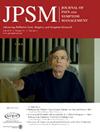Scholarly Peer Review for the Busy Clinician
IF 3.5
2区 医学
Q2 CLINICAL NEUROLOGY
引用次数: 0
Outcomes
1. Describe the role of a peer reviewer in the publication process.
2. Summarize the components of Major and Minor Concerns and choose the appropriate Final Recommendation to share with editors.
Key Message
This session, presented by editors-in-chief of two major North American palliative care journals, will teach attendees how to perform high-quality Peer Review. Serving as a Peer Reviewer allows practicing clinicians a way to shape palliative care's body of research to ensure cutting edge care for our patients.
Abstract
As hospice and palliative care has grown over the last two decades, a literature base to inform the work of our front-line clinicians has been developed. Unfortunately, clinical research, even in HPM, often happens far from the bedside. Many clinicians want to participate in research but busy clinical roles and a lack of training in research methods and grant writing can present obstacles that may seem insurmountable (1). How then can practicing clinicians influence the cutting-edge care that research defines? In this session, the Editor-in-Chief and Managing Editor of the Journal of Palliative Medicine and the Editor-in-Chief of The Journal of Pain & Symptom Management will prepare participants to become Peer Reviewers. The session will begin with a brief overview of academic publishing, including open access and subscription models, impact factors, and the complex process that takes a paper from submitted manuscript to final published paper. Core tenets of peer review, including timeliness, confidentiality, and constructive unbiased evaluation, will be shared. Attendees will then be taken through the elements of Peer Review, including first impressions, summarizing the paper, and describing Major and Minor Concerns. In addition, the implications of final recommendation (Accept/Minor Revision/Major Revision/Reject) will be discussed. Lastly, attendees will review several excerpts in small groups from past submitted manuscripts to find opportunities for authors to improve their papers. This session will offer attendees the opportunity to power the academic engine that drives our field forward, an engine that functions better when front-line clinicians help to steer the car.
References
1. Kelly J, Sadeghieh T, Adeli K. Peer Review in Scientific Publications: Benefits, Critiques, & A Survival Guide. EJIFCC. 2014;25(3):227-243. Published 2014 Oct 24.
忙碌的临床医生的学术同行评议
Outcomes1。描述同行审稿人在出版过程中的作用。总结主要问题和次要问题的组成部分,并选择适当的最终建议与编辑分享。本次会议由北美两家主要姑息治疗期刊的主编主持,将教授与会者如何进行高质量的同行评议。作为同行审稿人,执业临床医生可以通过一种方式来塑造姑息治疗的研究主体,以确保为我们的患者提供尖端的护理。摘要随着临终关怀和姑息治疗在过去二十年中的发展,为一线临床医生的工作提供了一个文献基础。不幸的是,临床研究,即使是在HPM中,也经常远离床边。许多临床医生想参与研究,但忙碌的临床角色和缺乏研究方法和拨款写作方面的培训,可能会带来似乎无法克服的障碍(1)。那么,执业临床医生如何影响研究定义的尖端护理?在本次会议上,《姑息医学杂志》的主编和执行主编以及《疼痛杂志》的主编;症状管理将帮助参与者成为同行审稿人。会议将以学术出版的简要概述开始,包括开放获取和订阅模式,影响因素,以及论文从提交手稿到最终发表论文的复杂过程。将分享同行评议的核心原则,包括及时性、保密性和建设性的公正评价。然后,与会者将通过同行评议的要素,包括第一印象,总结论文,描述主要和次要问题。此外,将讨论最终建议(接受/小修改/大修改/拒绝)的含义。最后,与会者将以小组形式回顾过去提交的手稿中的一些摘录,以寻找作者改进论文的机会。本次会议将为与会者提供机会,推动推动我们领域向前发展的学术引擎,当一线临床医生帮助驾驶汽车时,这个引擎会更好地运行。参考文献1。Kelly J, Sadeghieh T, Adeli K.科学出版物的同行评议:益处,批评,&;生存指南。EJIFCC。2014; 25(3): 227 - 243。2014年10月24日出版。
本文章由计算机程序翻译,如有差异,请以英文原文为准。
求助全文
约1分钟内获得全文
求助全文
来源期刊
CiteScore
8.90
自引率
6.40%
发文量
821
审稿时长
26 days
期刊介绍:
The Journal of Pain and Symptom Management is an internationally respected, peer-reviewed journal and serves an interdisciplinary audience of professionals by providing a forum for the publication of the latest clinical research and best practices related to the relief of illness burden among patients afflicted with serious or life-threatening illness.

 求助内容:
求助内容: 应助结果提醒方式:
应助结果提醒方式:


